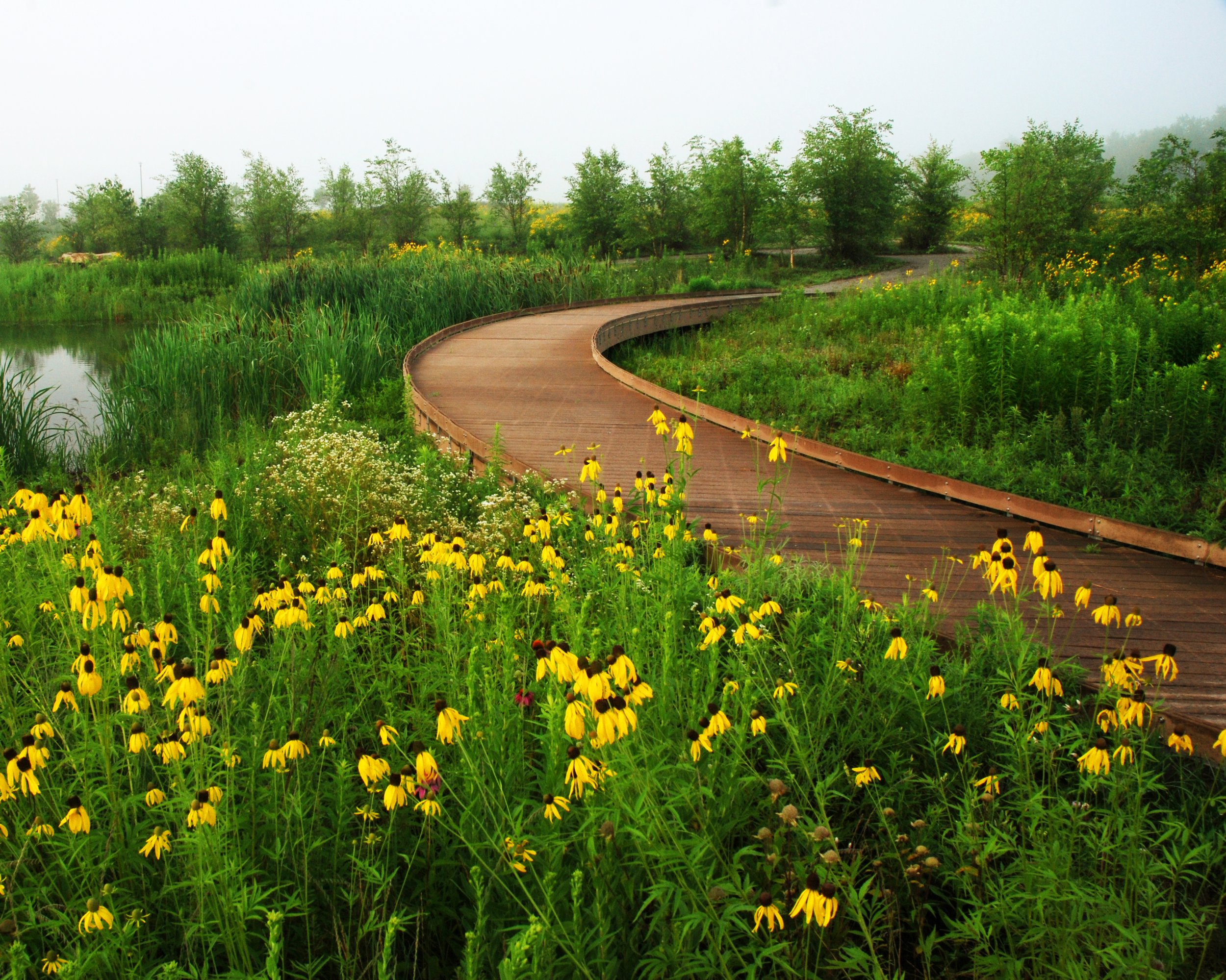
The Carbon Sequestration Benefit from Prairies has Positive Impacts to Help Mitigate Climate Change
Explore our Field Guide addressing the benefits and methodology of developing prairies.
Prairie landscapes are a beautiful natural alternative to lawn. They are recreations of the native wildflower and grass carpets that once covered the central US – the Midwest south into Mexico. Used in their native location, they are powerhouses of sustainability that sequester carbon, mitigate stormwater runoff, cool the air, and create habitats for pollinators, birds and wildlife. They require low energy, labor, and resource input, and cost less to install and maintain than lawn.
Prairies are a type of grassland unique to central North America. Grasslands are habitats where trees and shrubs are naturally excluded by limiting environmental factors. In the case of prairies, low precipitation and constant dry westerly winds keep woody plants at bay, so that grasses and wildflowers dominate. Our central plains have particularly rich, deep, silty soils, known as loess, that comes from weathered rock powder blown off of the Rocky Mountains over many millions of years. The result is a very dense and resilient plant community with deep roots, high biomass, and high diversity.
Prairies are generally composed of a few dozen varieties of grasses – about 80% – with the remaining 20% made up of hundreds of species of wildflowers. Prairies vary across their biome, from cool to hot along the north to south axis, and taller to short from the moister east to the drier base of the Rocky Mountains. This variation creates a patchwork of prairies types, each with a signature character in various regions.
By the 1920’s nearly all wild prairies had been broken up by the plow, and much of their natural thatch and soil richness was lost. Prairies today are either preserves or restorations, but once established, prairie landscapes begin to function like wild prairies, accumulating soil carbon and attracting wildlife.
Prairies provide big environmental benefits.
1. Carbon sequestration: Prairie grasses and wildflowers are mostly hidden underground, with fibrous root systems that can grow to a depth of 12’. These roots die back each year, leaving root tissue to decompose, adding soil carbon every season for hundreds of years. On average, prairies sequester 1 ton of carbon/acre each year – a significant carbon sink.
2. Low maintenance input: Prairies thrive without irrigation, fertilizers, or pesticides. They require mowing once or twice per year, once established, about 1/20th of the mowing demanded by conventional lawns. Considering that single stroke engines in most mowers are among the dirtiest polluters, this is a significant benefit.
3. Stormwater mitigation and cooling: The thick foliage of prairies breaks the momentum of raindrops and slows surface runoff, decreasing erosion and allowing nitrogen and phosphorus to be absorbed by grasses and wildflowers. Deep roots create pathways through the soil for percolation, replenishing ground water. This deep moisture keeps the prairie alive between rainfalls, cools the soil and air, and contributes moisture that builds clouds, further cooling the earth.
4. Biodiversity and habitat: The diversity of the prairie plant community attracts many insects, birds and other wildlife, and its density provides them with critically important cover. Grassland birds are now the fastest declining type of wild birds in North America.
The Planting Process
Planting a prairie begins with a soil test and careful inventory of existing plants. The most significant maintenance issue for prairie landscapes is competition from annual weeds and woody plants. If these are present on the site, they should be removed at the outset of the project.
There are two paths to realizing a prairie planting. One is to work with the existing plants found in the planting area, the other is to clear the area and begin afresh. The first method is faster and costs less, but comes with more risk of weed invasion that will take time and resources to eliminate later. The second method is more predictable, but costs more and takes longer to establish. Conditions found at the planting site should inform this decision.
The seed mix selected should reflect the native plant community and contain a balance of perennials grasses and wildflowers that will thrive in a variety of conditions. Aesthetically, seed mixes can be selected for size, color and seasonality. Specialist prairie seed suppliers offer trial-and-error tested mixes.
Application and Maintenance
In nature, prairies are landscapes that routinely experience fire. Mowing takes the place of burning for most prairie maintenance needs. Close cropped early spring mowing and raking allows sun to reach the soil and warm it up, as spring wildfires do in Nature. Mowing plants to a height of 4” before they start to bloom during the first two years eliminates most annual weed seeds, favoring perennial grasses and wildflowers.
Seeding a prairie costs about half what seeding a lawn costs, and prairies do not require irrigation, making upfront cost for prairies meaningfully lower than lawns. And without the spraying, fertilizing, and rolling required to keep a lawn looking neat, prairie maintenance costs about 1/3 of the cost of a full maintenance lawn.
Prairies work in a variety of large property settings: parks; stream and infrastructure corridors; university campuses; office or industrial parks; and medical and tech campuses. They add color properties, cool and clean the air, and add high environmental value while lowering costs.
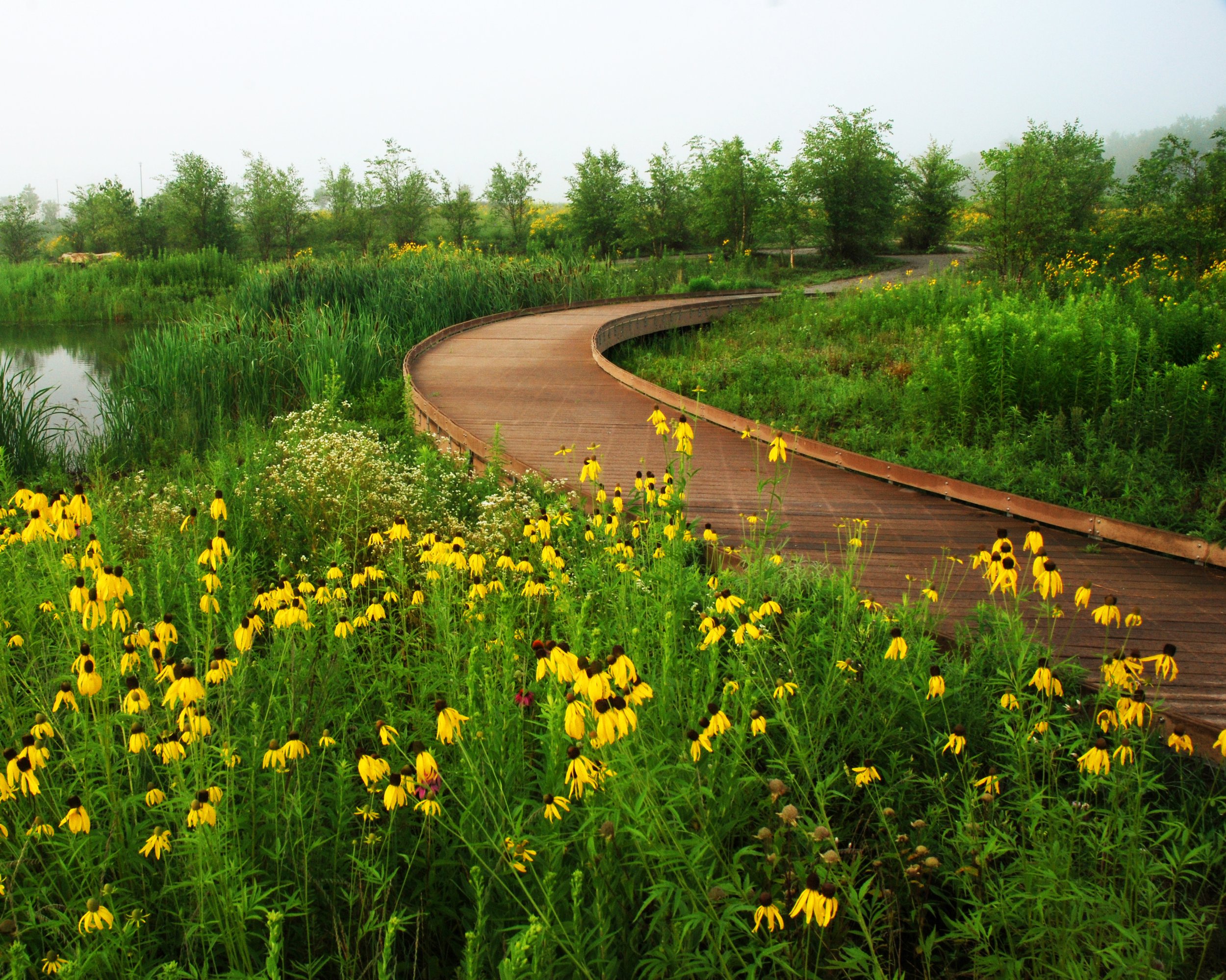

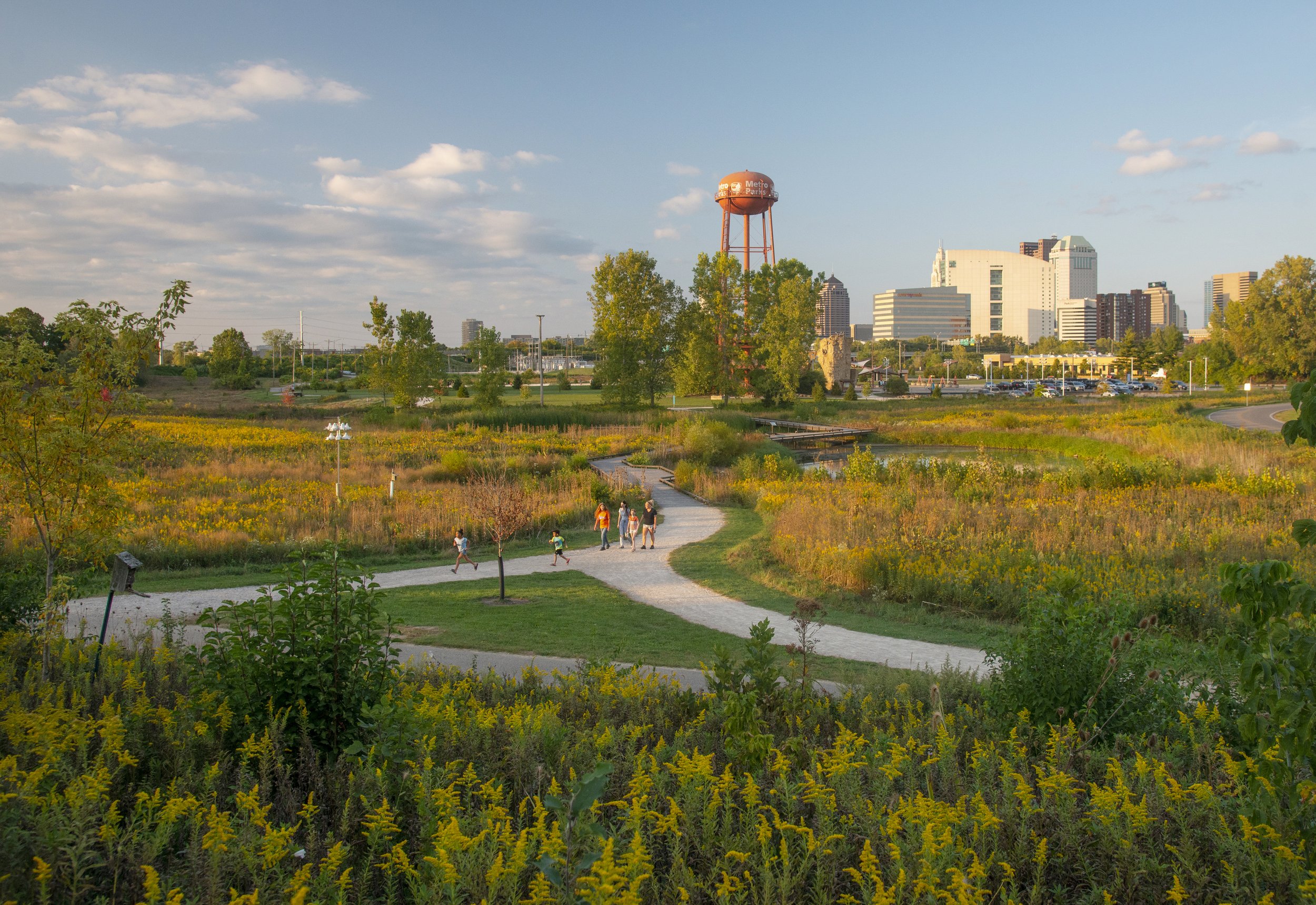
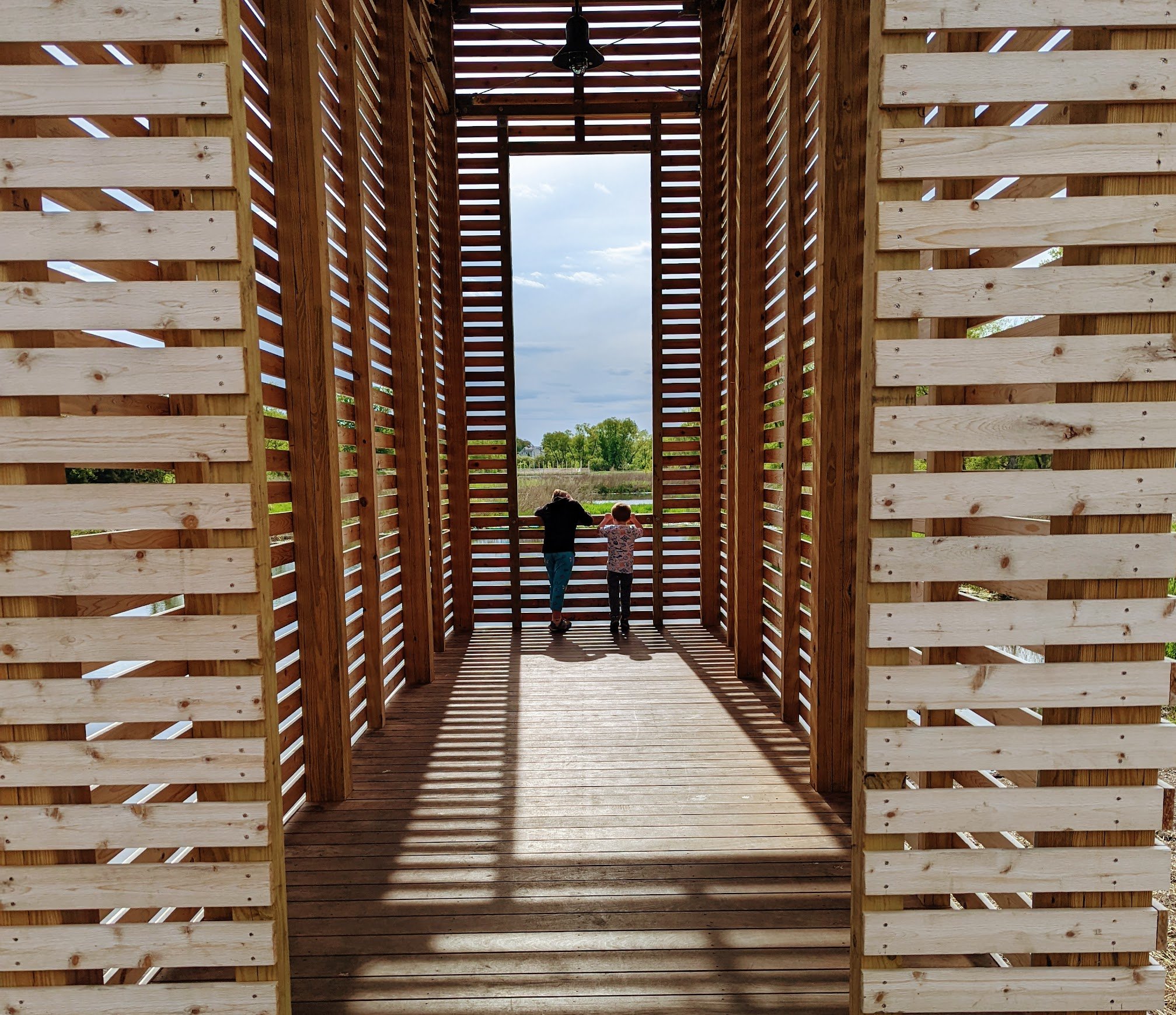

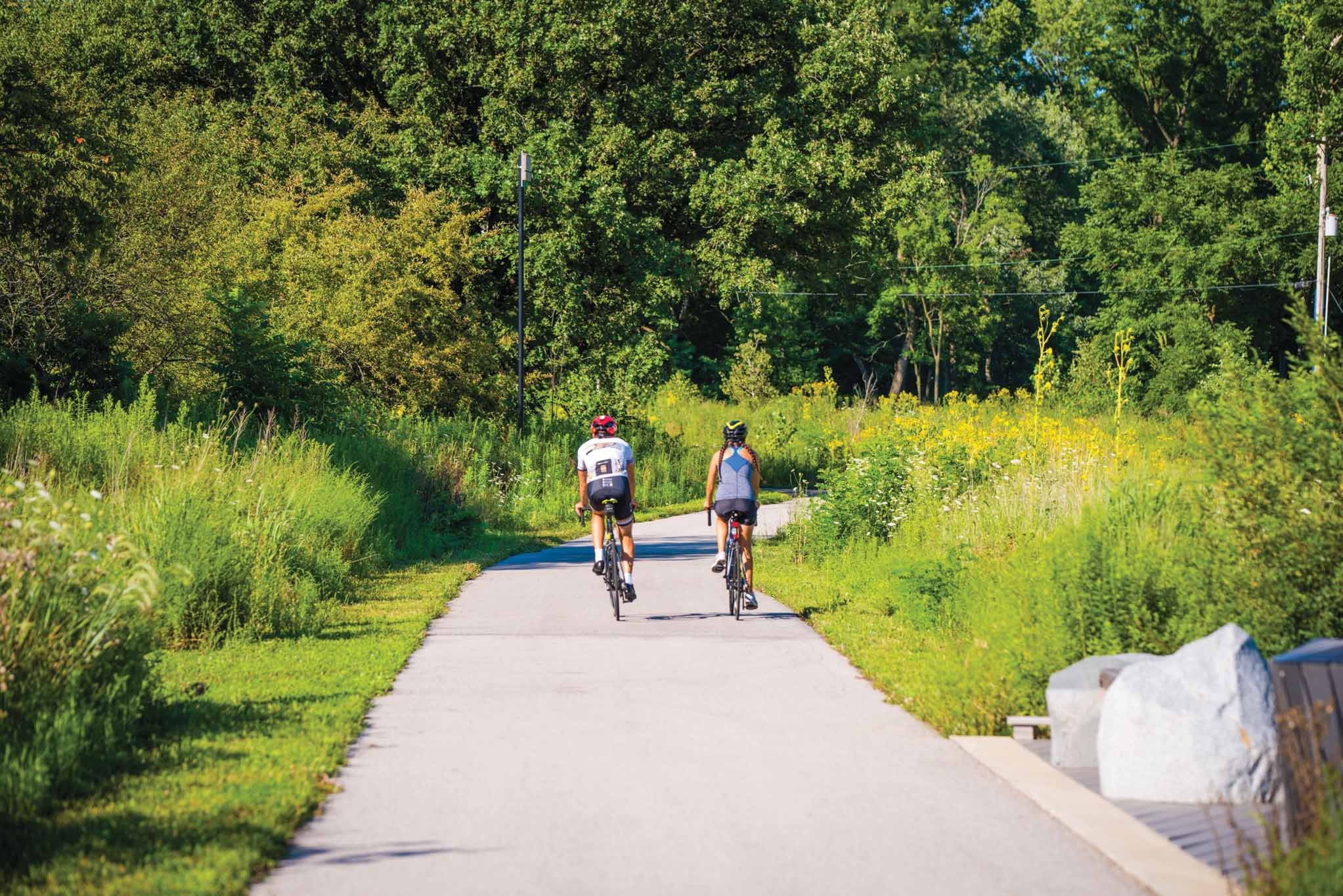
Download the Field Guide to Prairies.
Our Commitment to Sustainability
MKSK is committed to designing the change our world needs, discovering new solutions and building new ways of working. Every project is an opportunity to address climate change and loss of biodiversity in the design and planning of communities, landscapes, and cities. MKSK can assist in the design and planning of carbon sequestering landscapes, to help fulfill the environmental stewardship goals of our commercial, institutional, industrial, and public clients.
Learn more about MKSK’s LAB for Climate & Biodiversity Resilience.




